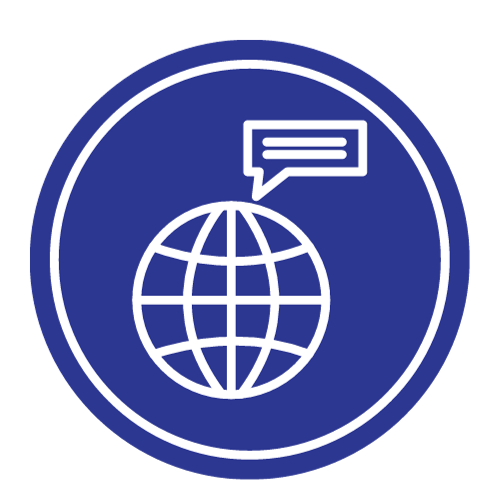2026 AI × Pharma × Tech Revolution — Companies in Play
(Organized by category and with entanglement context added)
SECTION 1 — NVIDIA-CENTRIC AI PHARMA ECOSYSTEM
🔶 These companies depend heavily on NVIDIA GPUs, CUDA, Omniverse, DGX clusters, or BioNeMo.
- NVIDIA (NVDA)
- Keystone of AI drug discovery acceleration
- BioNeMo + Clara for computational biology
- GPU demand from every AI pharma startup → 2026 hyper-growth anchor
- Recursion Pharmaceuticals (RXRX)
- Uses NVIDIA DGX + BioNeMo to discover drugs using biological foundation models
- Most direct AI-pharma play tied to NVIDIA
- Amgen (AMGN)
- One of the earliest adopters of AI-accelerated protein design
- Running large-scale compute with NVIDIA partners
- Moderna (MRNA)
- mRNA design pipelines powered by AI molecular modeling
- Evolving from biotech into AI-driven therapeutic design
- BioNTech (BNTX)
- Building AI-enabled personalized cancer therapy
- Expanding into AI immunology through NVIDIA platforms
SECTION 2 — PURE AI DRUG DISCOVERY COMPANIES
⚗️ 2024–2026 fastest-growth “暴富型” early-stage moonshots
- Insilico Medicine
- First end-to-end AI-discovered drug to enter human trials
- Strong computational chemistry stack
- Exscientia (EXAI)
- AI drug design + clinical decision models
- Works with Sanofi, BMS, Bayer
- Atomwise
- Uses deep learning for molecular binding prediction
- Major partnerships in oncology and immunology
- Deep Genomics
- AI-driven RNA drug programs
- Predicts impact of genetic variations → drug targeting
- Absci (ABSI)
- AI + wet lab automation to design new antibodies
- NVIDIA partnership for generative protein design
- Valo Health
- Full-stack AI bioplatform + digital twin patient modeling
- Cyclica (acquired by Recursion)
- Multi-target drug interaction modeling
SECTION 3 — BIG PHARMA ADOPTING AI AT SCALE
💊 Pharma giants transforming via AI cloud compute + automation
- Pfizer (PFE)
- AI for protein modeling + vaccine R&D
- Large NVIDIA compute footprint through AWS
- Novartis (NVS)
- One of the most aggressive “AI-first pharma” companies
- Uses AI across drug discovery, imaging, clinical data
- Roche / Genentech
- Deep AI investments in oncology, genomics, protein folding
- AstraZeneca (AZN)
- Uses AI to accelerate synthetic chemistry and molecule search
- Johnson & Johnson (JNJ)
- AI for devices, biomedical imaging, robotic surgery
- Merck (MRK)
- AI for molecular simulations and digital lab automation
SECTION 4 — AI COMPUTE, CLOUD, GPU, SEMICONDUCTORS
⚙️ Infrastructure supplying the entire 2026 AI–pharma revolution
- TSMC (TSM)
- Manufactures NVIDIA’s top GPUs (H100, B200)
- #1 bottleneck in global advanced compute supply
- Broadcom (AVGO)
- AI networking, ASIC accelerators
- Critical for AI datacenter bandwidth
- ASML (ASML)
- EUV lithography → every AI chip relies on ASML machines
- Amazon AWS (AMZN)
- Largest global buyer of NVIDIA GPUs
- Hosts AI drug discovery workloads from dozens of biotech startups
- Microsoft (MSFT)
- Azure + OpenAI + pharma partnerships
- AI-based molecular modeling platforms integrated with labs
- Google (GOOGL)
- DeepMind + AlphaFold
- Foundational protein structure datasets for modern drug discovery
- Snowflake (SNOW)
- Genomics & clinical data lakes for pharma AI pipelines
SECTION 5 — AI BIOLOGY, LAB AUTOMATION, SYNTHETIC BIOLOGY
🧪 New 2026 “新興產業” category: AI-automated labs + biological compilers
- Ginkgo Bioworks (DNA)
- Synthetic biology + massive organism engineering platform
- Zymergen (acquired)
- AI-automated bio-materials platform
- Sema4 / GeneDx
- AI-driven genomic diagnostics
- Illumina (ILMN)
- Sequencing + AI-enabled genomics data pipelines
- Core of precision medicine
- 10x Genomics (TXG)
- Single-cell platforms feeding AI biological models
- Berkeley Lights
- AI + microfluidics for antibody and cell screening
SECTION 6 — AI HEALTHCARE PLATFORMS & DEVICES
🏥 AI + IoT + Diagnostics + Digital Twin Medicine
- Tempus AI (TEM)
- Real-world oncology data + AI clinical treatment recommendations
- Butterfly Network (BFLY)
- AI ultrasound diagnostics (iPhone-based)
- iRhythm (IRTC)
- Wearable AI for cardiac analysis
- Siemens Healthineers
- AI imaging, robotic surgery, diagnostics
- GE Healthcare (GEHC)
- AI radiology, hospital automation, digital twins
SECTION 7 — AI FINANCE / 投資 / 暴富 型 蜂群效應
🟢 Companies riding the macro trend of AI wealth acceleration
- BlackRock (AI-driven asset modeling, biotech ETF expansions)
- ARK Invest — especially
- ARK Genomic Revolution ETF (ARKG)
- ARK Next Gen Internet (ARKW)
- AI biotech exposure leading to massive volatility (and upside)
- SoftBank
- Heavy investor in robotics, AI health, lab automation
SECTION 8 — EMERGING 2026 DISRUPTORS (Watchlist)
🚀 Early-stage but potentially explosive
- OpenFold / ESM Metagenomics ecosystem companies
- Next-gen protein modeling groups
- Strateos
- Full robotic cloud lab (AI-driven experiments)
- LabGenius
- AI for antibody evolution
- Genesis Therapeutics
- AI-accelerated small molecule discovery
- Schrödinger (SDGR)
- Physics-based simulations + machine learning for drug R&D
⚡ 2026 INTERPRETATION — WHERE THE “暴富機遇” SITS
The strongest entanglement is:
NVIDIA → AI Drug Discovery → Automated Cloud Labs → Big Pharma → Global Compute Demand
Which creates 5 major investment clusters:
- AI Compute (NVIDIA, TSMC, AVGO, ASML)
- AI Drug Discovery Startups (Recursion, Exscientia, Absci, Insilico)
- Big Pharma adopting AI (Pfizer, Novartis, Amgen, AstraZeneca)
- Cloud AI Platforms (Microsoft, Amazon, Google)
- Synthetic Biology & Lab Automation (Ginkgo, 10x, Tempus, Strateos)
These are the segments where 2026 wealth acceleration is likely to concentrate.


